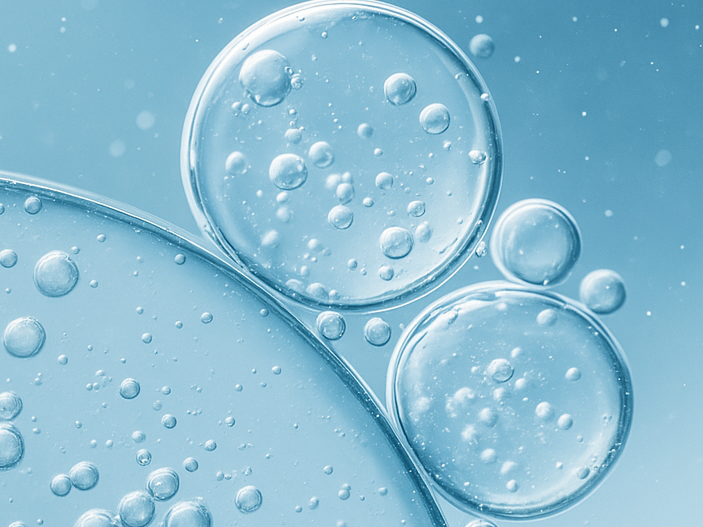The Rise of BPC-157
BPC-157 has quickly moved from niche bodybuilding circles to mainstream recovery conversations, exploring its potential for faster healing, gut protection, and inflammation control.

Over the past few years, BPC-157 has gone from an obscure research peptide to one of the most talked-about recovery tools in athletic and wellness circles. Once whispered about in bodybuilding forums, it is now making its way into conversations among physical therapists, competitive athletes, and biohackers.
The reason for its surge in popularity is simple - word has spread about its potential to help the body recover faster from injury, protect the gut lining, and calm inflammation. Social media stories of athletes bouncing back from stubborn injuries, alongside a growing body of animal research, have fueled curiosity.
If you have been sidelined by an injury that refuses to heal, frustrated by recurring aches, or dealing with gut issues that flare up at the worst times, BPC-157 might already be on your radar. And while it is not a magic bullet, the science behind it is genuinely exciting - especially if you are looking to support recovery and protect your body’s most injury-prone tissues.
What Exactly Is BPC-157?
BPC-157 stands for Body Protection Compound-157. It is a lab-made version of a naturally occurring protein fragment found in the stomach, originally studied for its ability to protect the gut lining. But as research expanded, scientists found it might also influence how quickly and effectively the body repairs tendons, ligaments, muscles, blood vessels, and even nerves.
Why People Are Interested in BPC-157
1. Faster Soft Tissue Recovery
Soft tissue injuries - think tendons, ligaments, and muscle strains - are notoriously slow to heal. In multiple animal studies:
- Achilles Tendon Healing - Rats with a completely cut Achilles tendon regained full tendon integrity within 14 days when given BPC-157, compared to slower, incomplete healing in untreated rats.
- Tendon-to-Bone Recovery - When a tendon was surgically reattached to bone, BPC-157-treated rats showed stronger, more flexible reattachments and better tissue quality over the first 3 weeks.
- Ligament Repair - In medial collateral ligament injuries, improvements were seen with oral, topical, and injected BPC-157, with measurable benefits still present 90 days after injury.
These results do not automatically translate to humans, but they paint a clear picture: in lab models, healing happens faster and with better tissue quality.
2. Gut Lining Protection and Repair
If you have ever had gut irritation from painkillers or stress, this is where BPC-157 first earned its reputation.
In animal models, BPC-157:
- Repaired stomach lining damage from NSAIDs and alcohol, often within 24–48 hours.
- Protected the intestines after surgery, helping reconnect tissue and prevent leaks.
Researchers link these effects to improved blood flow in the digestive tract and direct protection of the cells lining the gut.
3. Calming Inflammation
Injury healing is not just about repair - it is also about controlling inflammation so tissues can recover.
BPC-157 has been shown to reduce pro-inflammatory molecules and oxidative stress in injured tissue, creating an environment where healing cells can do their work more effectively.
4. Supporting Blood Vessels and Nerves
Better circulation equals better recovery. BPC-157 appears to increase tiny blood vessel growth at injury sites, delivering oxygen and nutrients right where they are needed.
In nerve injury models, it also seems to help damaged nerves regrow and reconnect faster - a bonus for injuries involving both tissue and nerve trauma.
How It Works
BPC-157 is suggested to:
- Boost VEGF, a growth factor that triggers new blood vessel formation.
- Modulate nitric oxide, improving circulation and reducing inflammation.
- Activate FAK-paxillin signaling, which helps repair cells move to injury sites and close wounds.
- Influence growth hormone pathways, potentially amplifying natural repair signals.
What to Consider If You’re Exploring BPC-157
If you are curious about BPC-157, here are a few thought-starters before diving in:
- Match it to your goal - most people look at it for tissue repair, gut support, or chronic injury recovery.
- Be patient but observant - in studies, benefits often showed within days for gut tissue and weeks for soft tissue.
- Think big picture - peptides work best when paired with rest, rehab, and good nutrition, not as a standalone fix.
Key Takeaway
BPC-157 has shown unusually consistent regenerative effects in animal models - from accelerating tendon healing to protecting the gut lining. For someone exploring options to bounce back from injury or protect their gut, it is a compound worth learning about - with the understanding that research in humans is still catching up.
References (AMA Style)
- Staresinic M, Sebecic B, Patrlj L, et al. Gastric pentadecapeptide BPC-157 accelerates healing of transected rat Achilles tendon and in vitro stimulates tendocytes growth. J Orthop Res. 2003;21(6):976-983. doi:10.1016/S0736-0266(03)00110-4
- Krivic A, Anic T, Seiwerth S, Huljev D, Sikiric P. Achilles detachment in rat and stable gastric pentadecapeptide BPC-157 — promoted tendon-to-bone healing and opposed corticosteroid aggravation. J Orthop Res. 2006;24(5):982-989. doi:10.1002/jor.20096
- Cerovecki T, Bojanic I, Brcic L, et al. Pentadecapeptide BPC-157 (PL 14736) improves ligament healing in the rat. J Orthop Res. 2010;28(8):1155-1161. doi:10.1002/jor.21107
- Chang CH, Tsai WC, Lin MS, Hsu YH, Pang JH. The promoting effect of pentadecapeptide BPC-157 on tendon healing involves tendon outgrowth, cell survival, and cell migration. J Appl Physiol. 2011;110(3):774-780. doi:10.1152/japplphysiol.00945.2010
- Hsieh MJ, Lee CH, Chou HC, et al. Modulatory effects of BPC-157 on vasomotor tone and the non-adrenergic non-cholinergic system — involvement of nitric oxide. Sci Rep. 2020;10:17076.
- Drmic D, Kolenc D, Ilic S, et al. Celecoxib-induced gastrointestinal, liver and brain lesions in rats are attenuated by BPC-157. World J Gastroenterol. 2017;23(29):5304-5312.
- Lojo N, Romic Z, Drmic D, et al. Effects of diclofenac, L-NAME, L-arginine, and BPC-157 on gastrointestinal, liver, and brain lesions, failed anastomosis, and intestinal adaptation deterioration in 24-hour short-bowel rats. PLoS One. 2016;11(9):e0162590.

